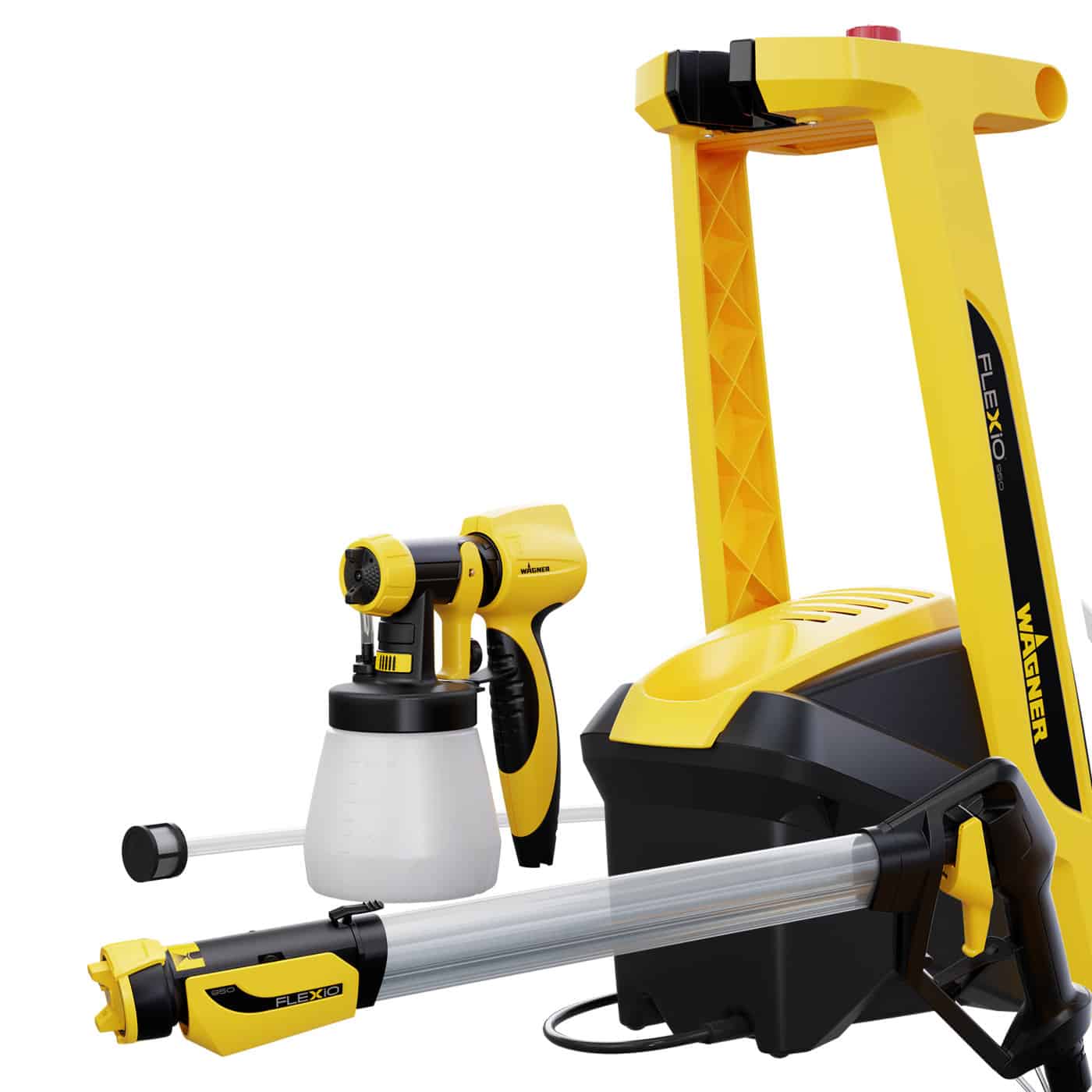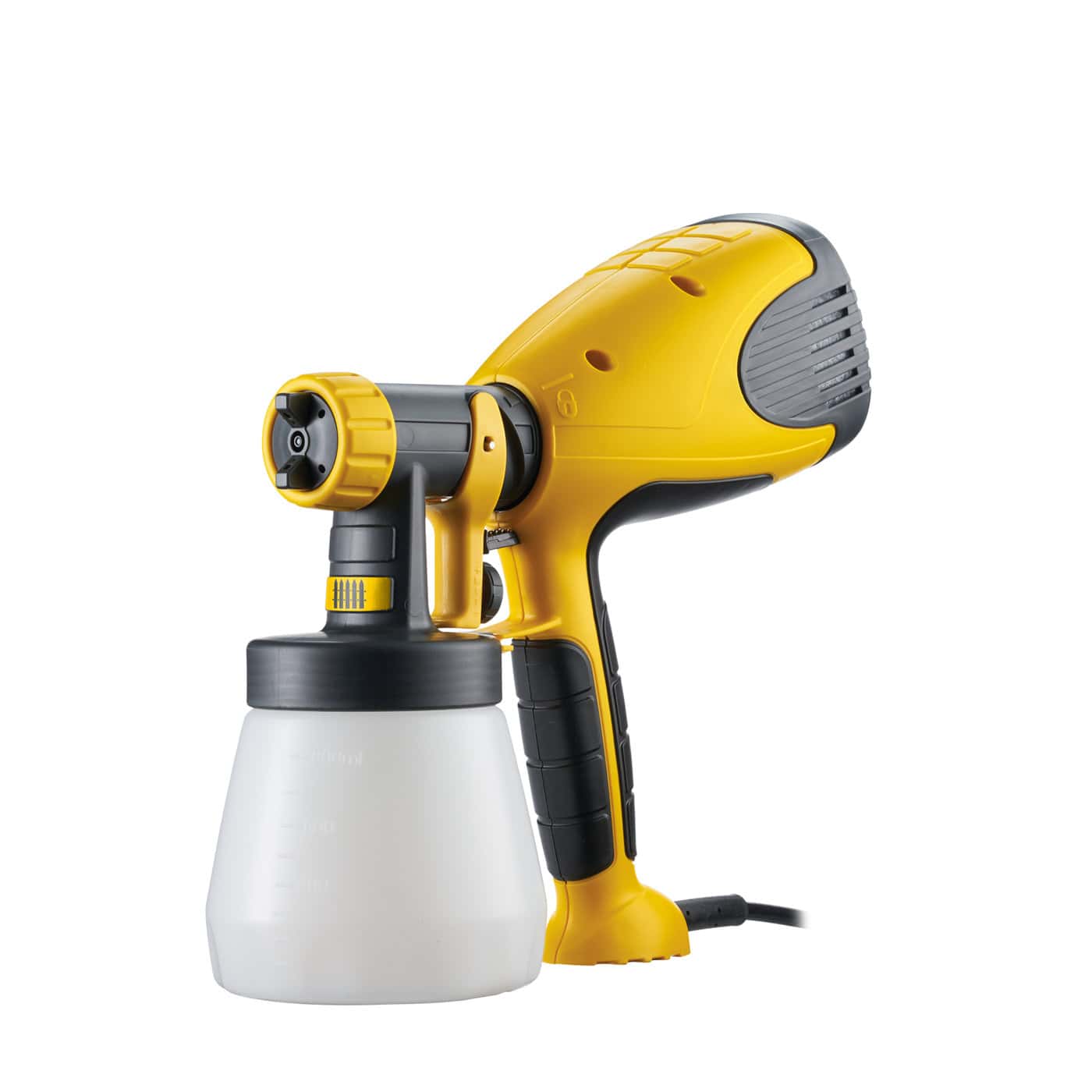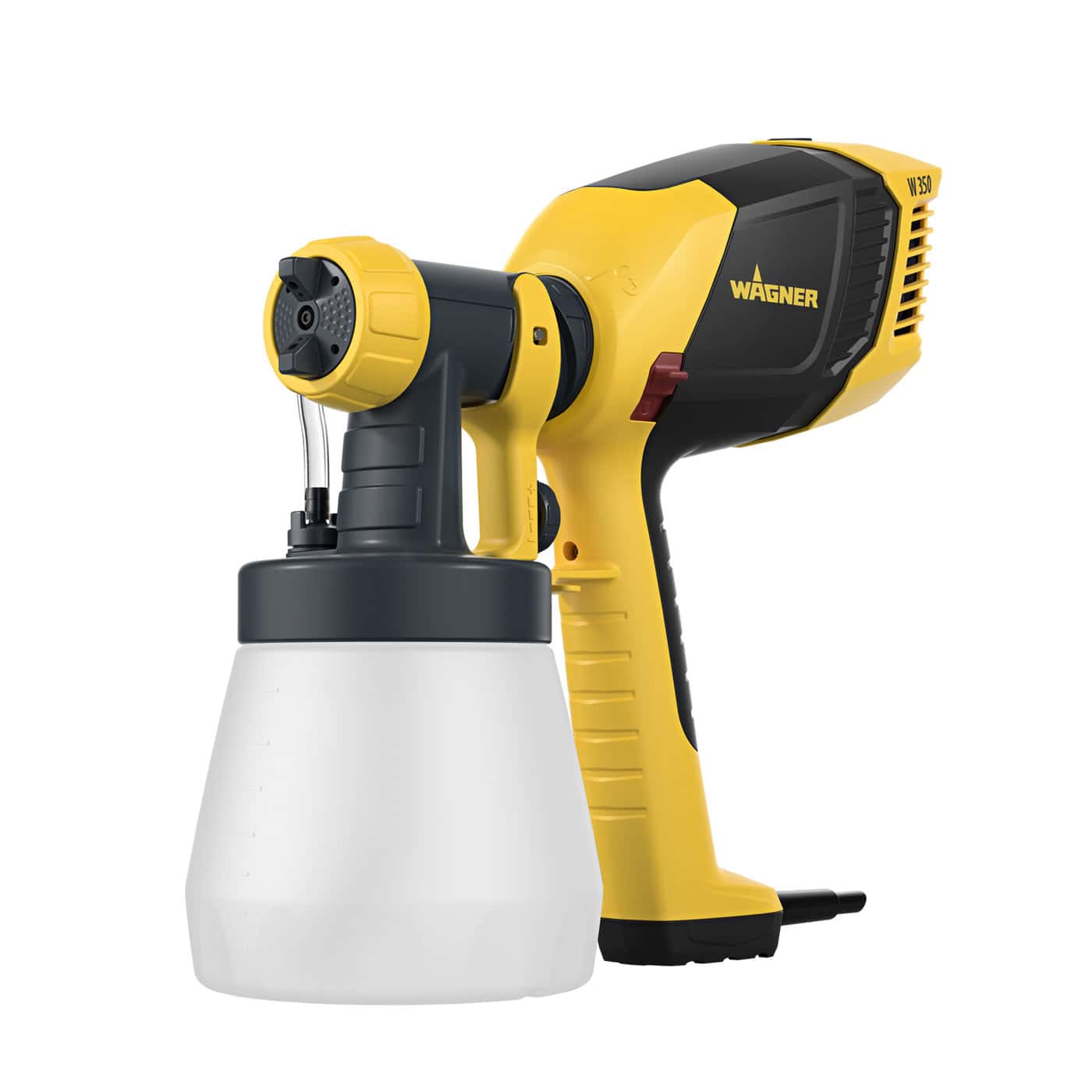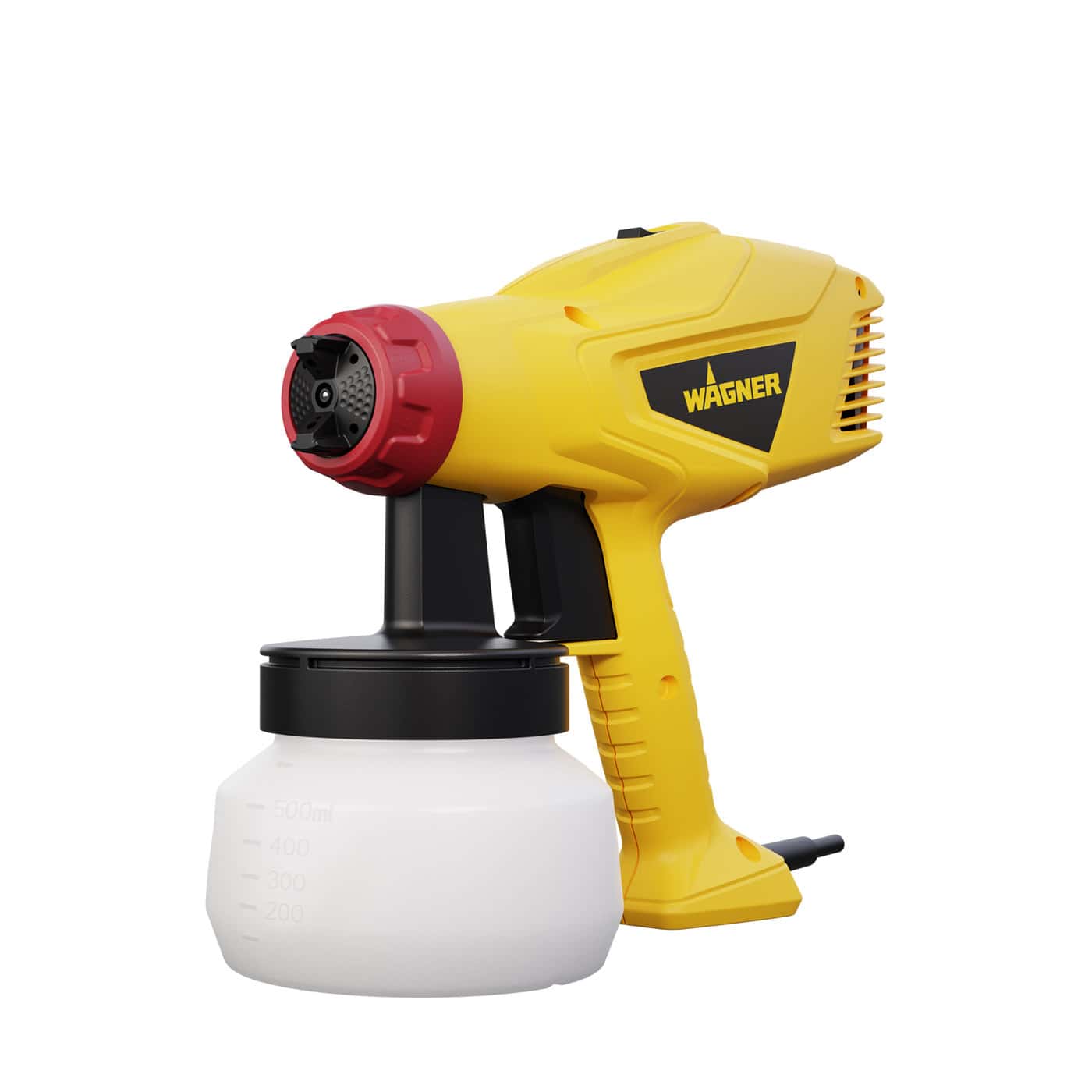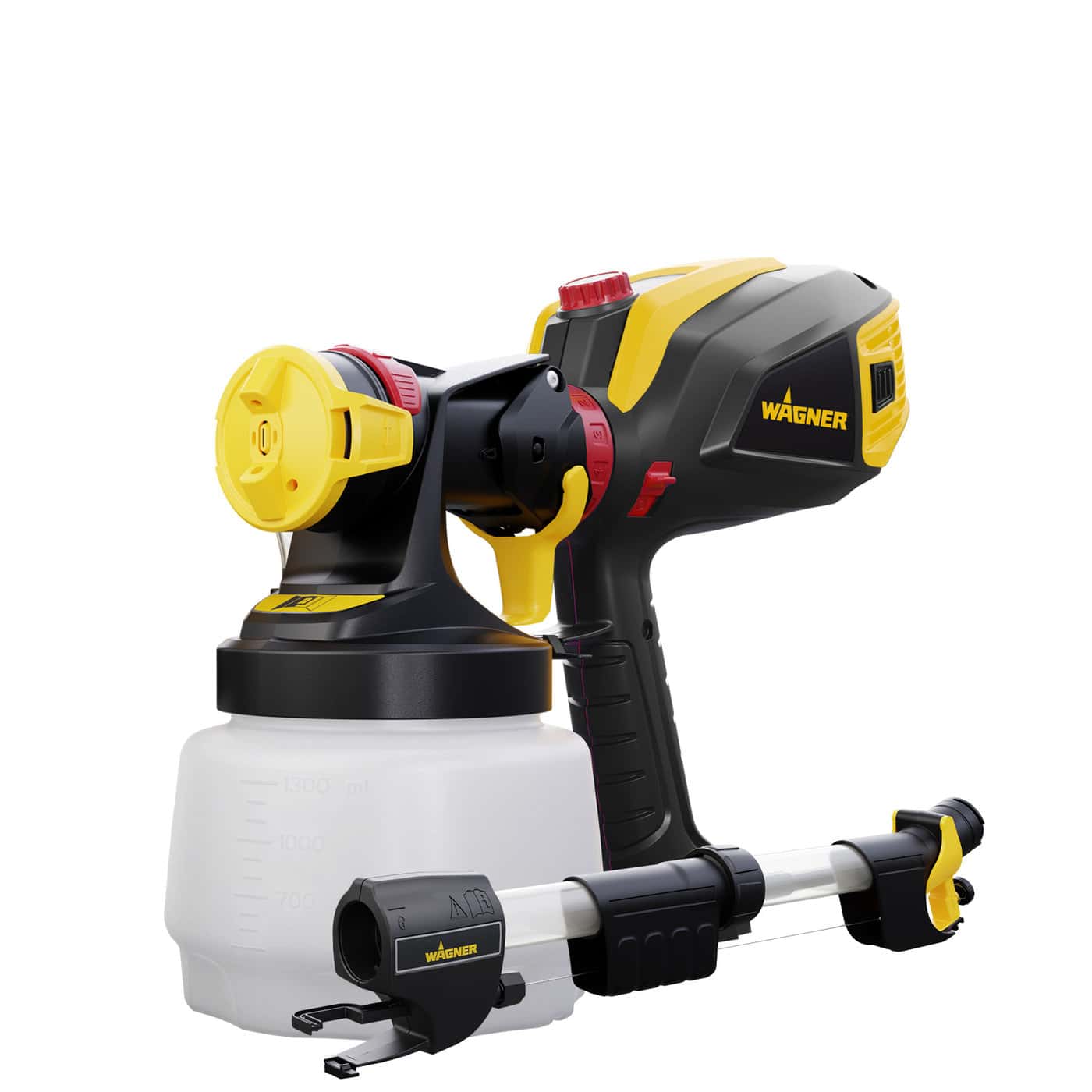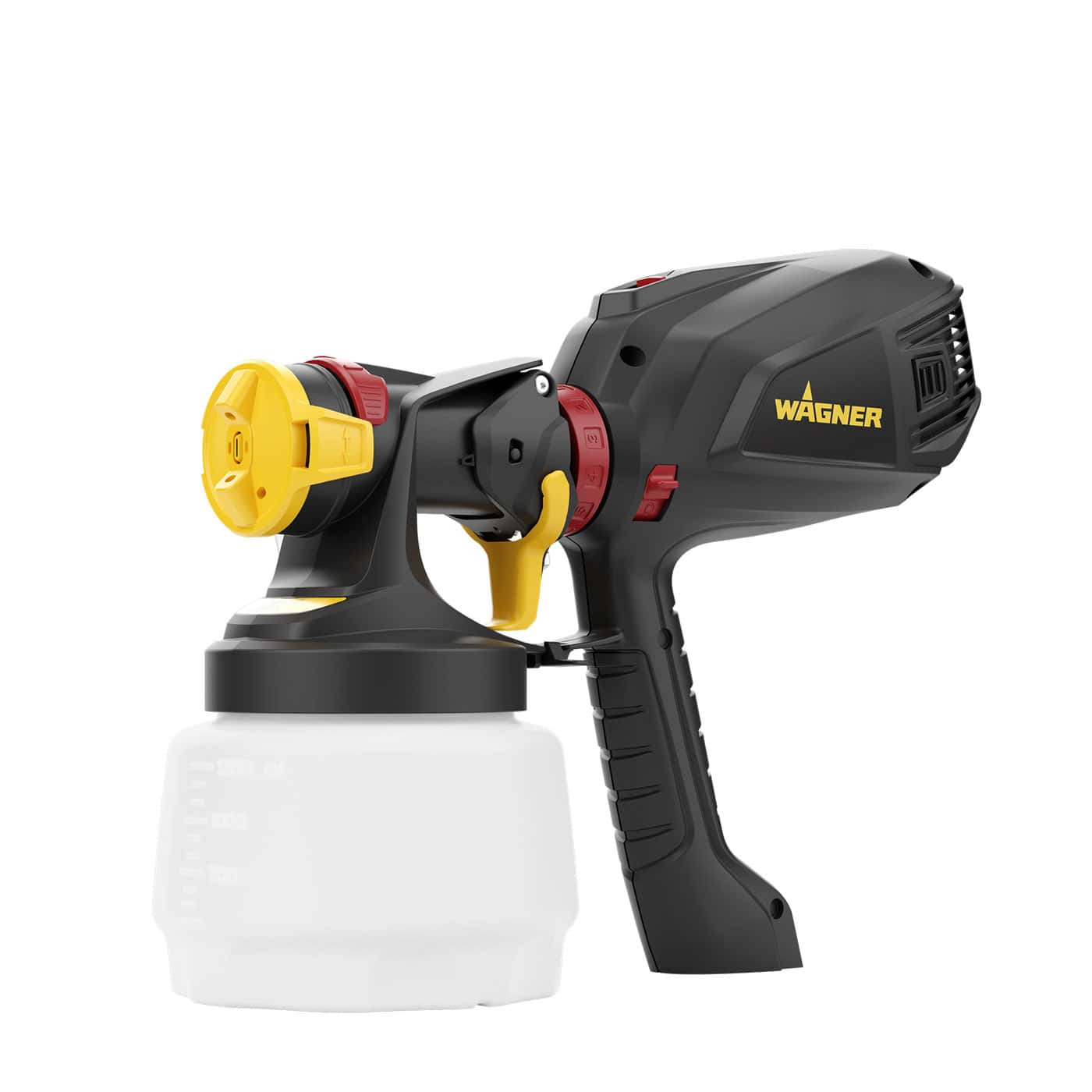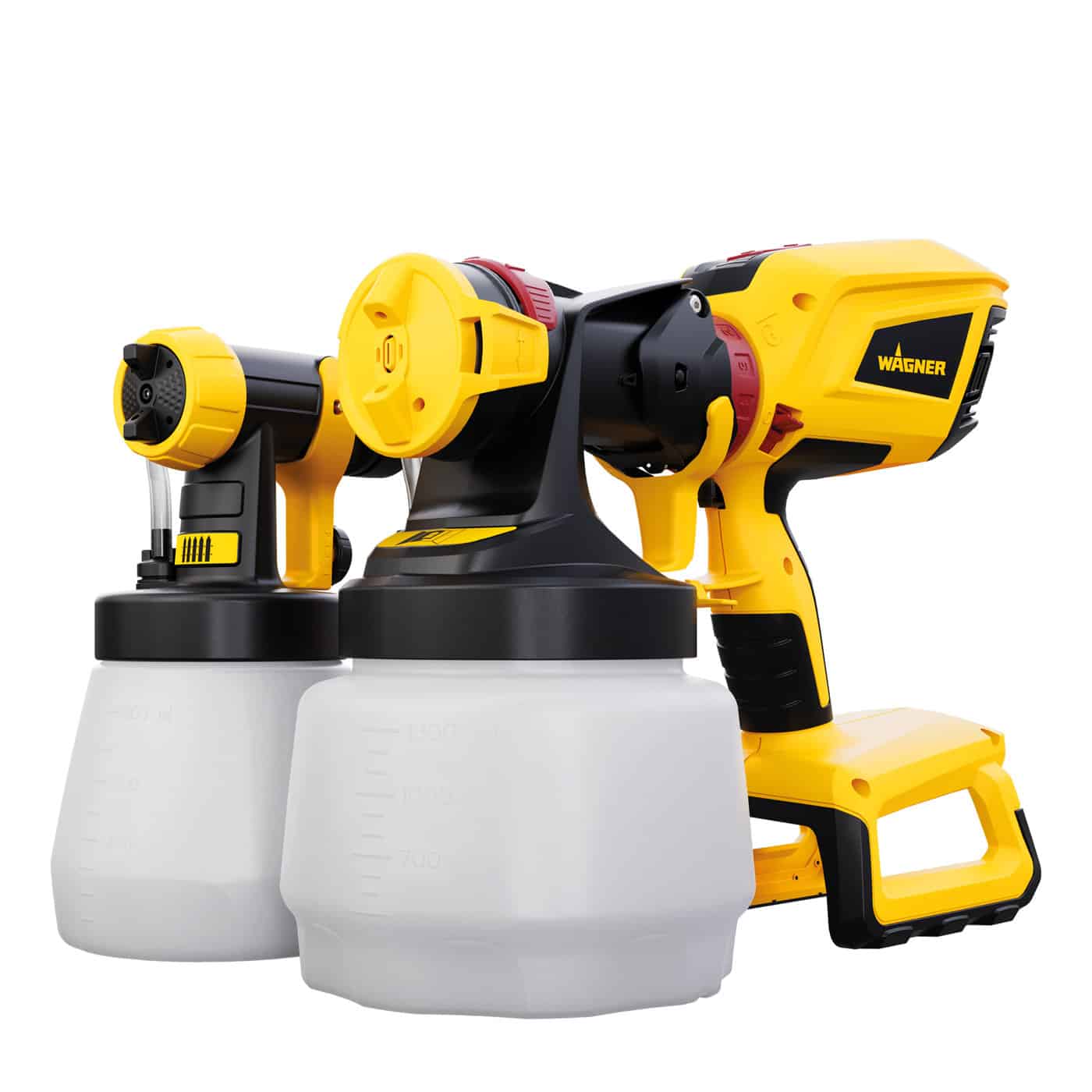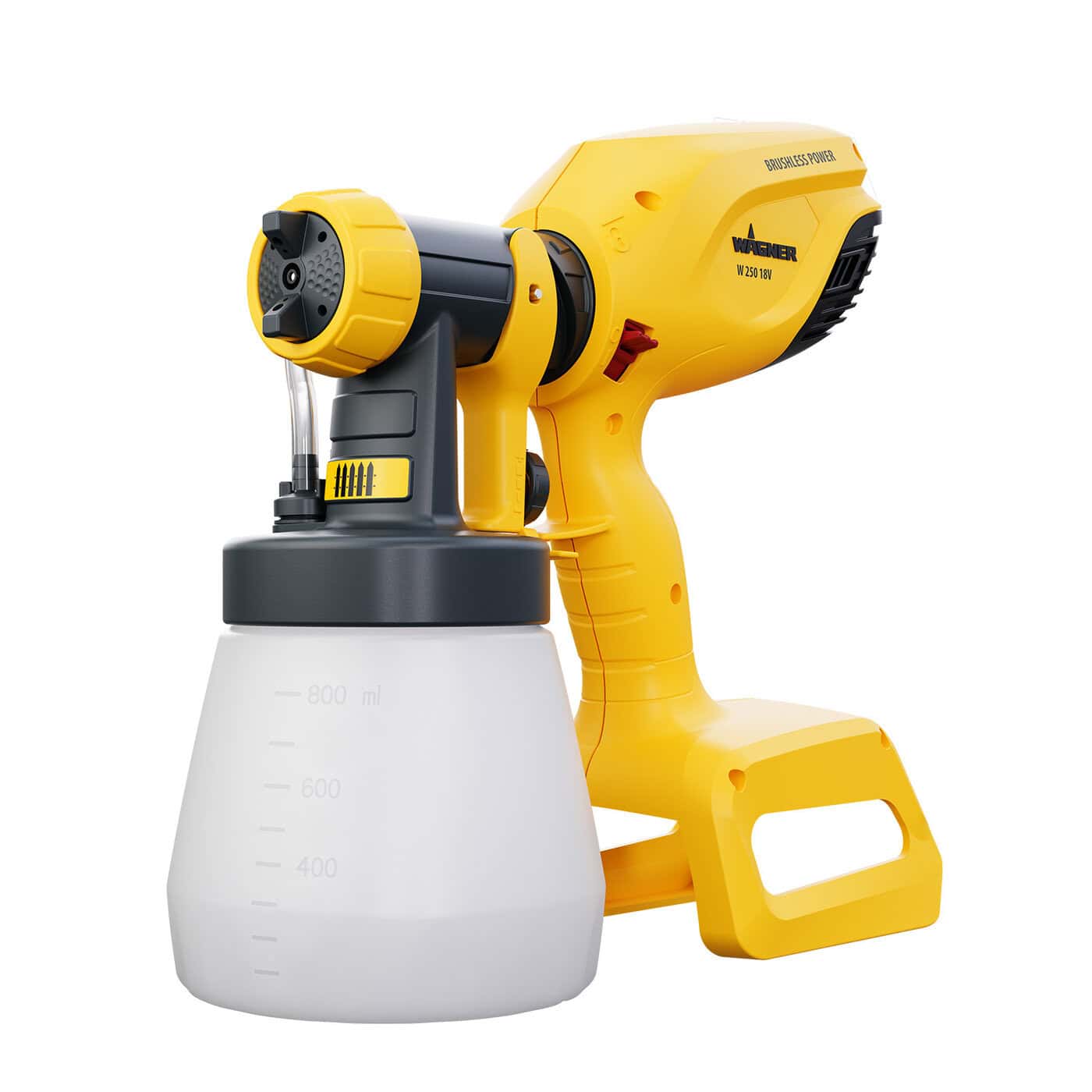
What is HVLP?
Have you ever wondered what “HVLP” stands for?
Well, it stands for “high volume low pressure”, which refers to a paint spray system that uses a high volume of air at low pressure to achieve a fine and even spray pattern with minimal spray mist. Read on for full details.
How does spraying with HVLP work?
- The turbine generates air flow that moves into the container and out through the gun nozzle.
- As the air flows into the paint container, it compresses the air inside the container and pushes the paint through the suction tube towards the nozzle.
- The high air volume and low air pressure work together to atomise the paint into fine particles at the nozzle outlet, creating the spray jet.
When using the nozzle, both the paint particles and the air stream are released together. This creates a “jacket” of air around the paint particles, which reduces the amount of spray mist and results in less material waste. As a user, you can enjoy better paint coverage and less material loss with this technology.

It is important to note that HVLP spraying produces larger micro paint particles compared to airless spraying due to the lower pressure used. This distinction may not be visible to the naked eye, but it is crucial to be aware of the differences between airless and HVLP to select the most appropriate sprayer for your project.
Which materials are suitable for HVLP sprayers?
Different materials can be sprayed with the HVLP paint sprayers.
We have prepared an overview for you here:
The following can be processed:
- Varnishes and glazes
- Interior Wall Paints
- Exterior Paints
- Primers
- Wood stains
- Oil based paint

It’s important to keep in mind that not all materials can be sprayed using WAGNER’s HVLP paint sprayers. WAGNER offers a range of equipment that is specifically designed for certain applications and materials, ensuring you achieve the best outcome.
What should be considered
when spraying with an HVLP
paint spraying system?
To achieve a perfect spray painting finish, it’s essential to properly calibrate your equipment and dilute the material if needed. You should aim for smooth and even coverage, with no visible imperfections. Your success depends on various factors, including your sprayer, its settings, the type of material you’re using and your technique. To ensure the best outcome, we highly recommend that you carefully review the operating instructions for your sprayer and follow the manufacturer’s recommendations for paint dilution and ensure the surface preparation has been thorough.
Materials can be used for different applications with the HVLP paint sprayers. Whether interiors or exteriors, you will always find a suitable sprayer for your application.

 AUD
AUD  NZD
NZD
